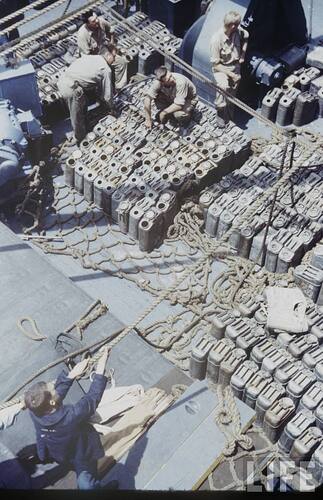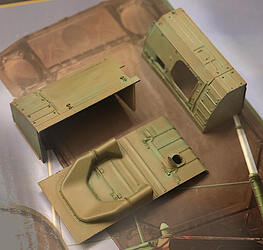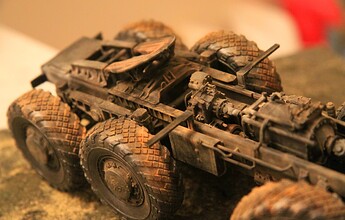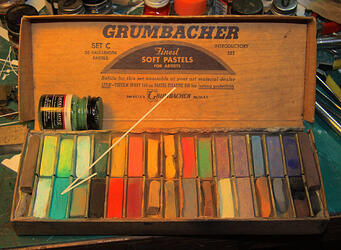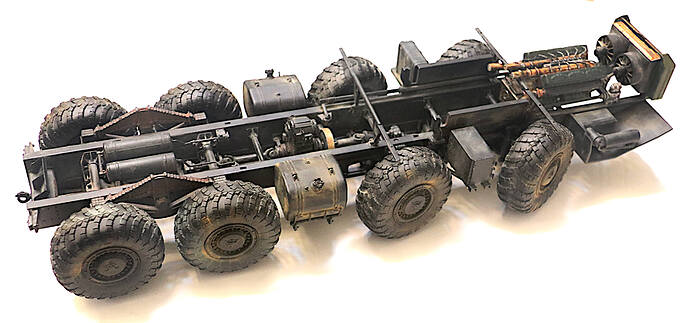So I am building a Fury Tank. Could careless about its colors. But what I am curious of is, did the green change shades during Sherman variants, and did helmet’s, gas cans, match the colors used?
Nope - they all left the factory in good old OD. Same for the fuel cans, helmets, etc. But as they say, it’s the mileage that counts - things fade, get dirty, or get over-painted from time to time, so some variation is an OK use of “Modeller’s License” to liven up an otherwise dull paint scheme. Bear in mind the whole point of OD was to be dull, and blend into the background rather than call attention!
Well that seems to easy.
Yep - selective shading is your friend here! And at least the tank could have black camo oversprayed on it, as many did in the ETO. And often this was a case of some grunt painting anything that didn’t move fast enough, so you could have bare OD patches where something (like a fuel can, shovel, etc) was in place and then removed, leaving an OD “shadow” where it had been. Not sure I’d go so far as to have a crewman-shaped “shadow” but I bet it happened more than once…
This source of paint used by vehicle restorations has a few different OD paints. Early war seems to have been different than later in WW2.
Also… keep in WW2 was a major undertaking. The paint was not made from only one source. You can expect some variation.
http://www.rapcoparts.com/padenew.html
Here’s another site with the same opinion.
https://paintgallons.quartertonparts.com/product/33070-early-wwii-od-paint-one-gallon/
So once again I am going to “ruffle” some tail feathers. I don’t set out to piss the “know it alls” off, it just works out that way, SORRY.
So during a war, like the Second World war, contracts go out, Some of these are for colours, such as Olive Drab or Zinc Chromate. Well JUST because uncle Sam wants it to be a certain shade, DOESN’T mean that’s what they always GET. There is a little thing called “profit margins”. Now I know it’s hard for some to believe, BUT some contractors put profits before patriotism. And as such cut corners and costs. Let’s say it took X amount of Green and X amount of Yellow and even X amount of Brown, BUT during the war Yellow pigments were ten times the cost of other pigments. Well, the “profits” first contactor cut the amount used to save a buck, and that kids is ONE OF THE MANY reasons there are different shades of OD and others. You also see an extension of this in fabrics used to produce uniforms. Cotton was in high demand, so FILLERS were added, again to increase profits, NOT by all but enough. I found all of these cool little ditties out by… WAIT FOR IT… reading books, NOT just Wikipedia… My apology to the original poster, my intent sir was not to ever insult you… However, I have incurred the “wrath” of those who think the internet is the soul reference for everything, hey look there goes a Purple Martin, Hell I read it on the internet, so it has to be true…
One other point to consider. All of the different items in OD were produced at different times, in different locations. The helmets, which had a grit paint, that gives a different look to the OD compared to the smooth surfaces of the tank or jerry can, will be kept indoors in a warehouse facility until issued. The jerry cans will be kept in warehouse, then later in outdoor storage exposed to the elements. They will soak up fuel or oil spillage during use, altering the look of the OD paint on the can. And of course the tank will have sat in outdoor motor pools for weeks to months before finally being issued to a combat unit and going into action. Pick your three favorite shades of OD to start with and go from there.
GREAT INFORMATION, I hadn’t even thought of that. Thank you
Whitney
An easy way to show this variation in the shades of US Olive Drab is via filters. By applying an olive green, brown, or gray filter to selected items, you can shift the color of the item. It is far faster, and cheaper, than buying a half-dozen OD paints from different vendors.
What I have seen from pictures and in life they are painted olive green and time changes them to olive drab. Gas cans and some clothes.
You didn’t mention names but no feathers ruffled here. I was just providing info I had.
no feathers ruffled here either. In fact I welcome being corrected anytime. Much rather get info than miss understand.
Okay I got another one for you guys. Gas cans, why do I see some with white x’s? Done before shipped, done by solders in the field, done to separate water from gas, if not, what did they do for a water can?
Thanks
Germany used a white cross (sometimes w/a W if from factory) to denote water. They were also stamped w/ Wasser (water) at the top.

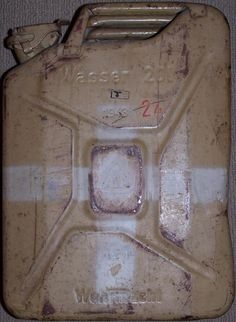
US used special cans w/a flip top for water, as opposed to the screw cap for fuel.
Not sure what other countries did.
thanks, this helps. So the U.S. white was for water?
Yes, you don’t see many US ones painted w/a white X though. The top was supposed to be the indicator.
I’m traveling for work right now or I’d toss up some pictures of what I’m working on which relates to this 100%. I’ve basically collected some various bottles OD. Bought a few more and worked in some khaki to bring out the details on stowage on some Sherman’s and a Duster. I’ll be back on Friday, if this is still going I’ll toss up my results prior to filters and oils.
I know I have been sort of a broken record on this subject but please consider turning to pigments (oil pastels) to shift and vary the shades of OD. (Or any color)
The tent cover seen on the back of this Stuart started life with the very same base coat of OD as the tank. The ONLY differences here are the pigments later applied to each
Here a base coat of a British Green (Cannot remember which one) has been shifted to serve as a semi-faded Russian green.
Color shifting can be subtle or it can be extreme. Again this highly faded Russian Green started as a base coat of US OD. The rest are pigments. (The chassis is Tamiya Matte Black rattle can with a mud and a dust layer of pigments applied.)
Now this is weathering rather than color shifting but . . .
Ever build one of those BIG Russian 8x8 Chassis only to have all that beautiful detail disappear when you painted it matte black?
Now I admit you could airbrush this with a highlight shade to bring out all the detail but my contention here is that NOTHING represents dust as well as DUST. (Oil Pastel Dust) Look closely please.
This affect was accomplished in about 10 minutes and required no paint mixing or airbrush clean-up. I did not even have to clean the stiff brush I applied the powders with. I first sprayed everything with a coat of Tamiya Matte Clear (TS-80) applied very, very dry and then scrubbed the pastels into the “tooth” of the matte clear. As such the pastels are now almost permanent.
Regardless of the reason (??profit taking??) early war US OD certainly had more yellow in the mix.
Which is why I morn the loss of Model Masters #1911 US OD. IMHO the best early war OD on the market. (But hey, I can always color shift whatever paint color I end up using Right?)
Going out on a limb here with a personal opinion but in all likelihood US OD paint DID come from only a few paint suppliers. My only proof of this opinion is that I have actually laid eyes on the Du Pont de Demuirs huge paint plant in Louisville, Kentucky.
Du Pont has been making paint since 1902.
Another opinion: the “Profit Takers” as they are being called here may have simply gone to the Army Procurement Board and said “Hey we can make the same high quality, consistently colored paint, a lot cheaper if you change the official color standard and let us back off on the amount of yellow used in the mix.” It might have been simply a win-win for both the US Government AND the paint companies.
Now if we are talking German paint production THAT is a totally different matter. Many small paint manufactures with some sub-contractors actually mixing their own paints. And everyone trying to meet the prescribed military standards while at the same time experiencing material supply shortages everywhere.
At the Patton Museum we lifted the floor plates off a 251 for restoration and found multiple variations in the standard color used and these were parts that had been protected from direct sunlight for some 60+ years. Charles Lemons; the then curator, has written at length on the subject. I will try and find a link.



